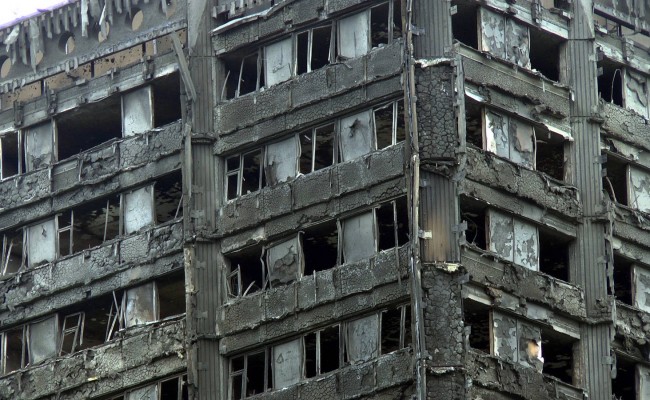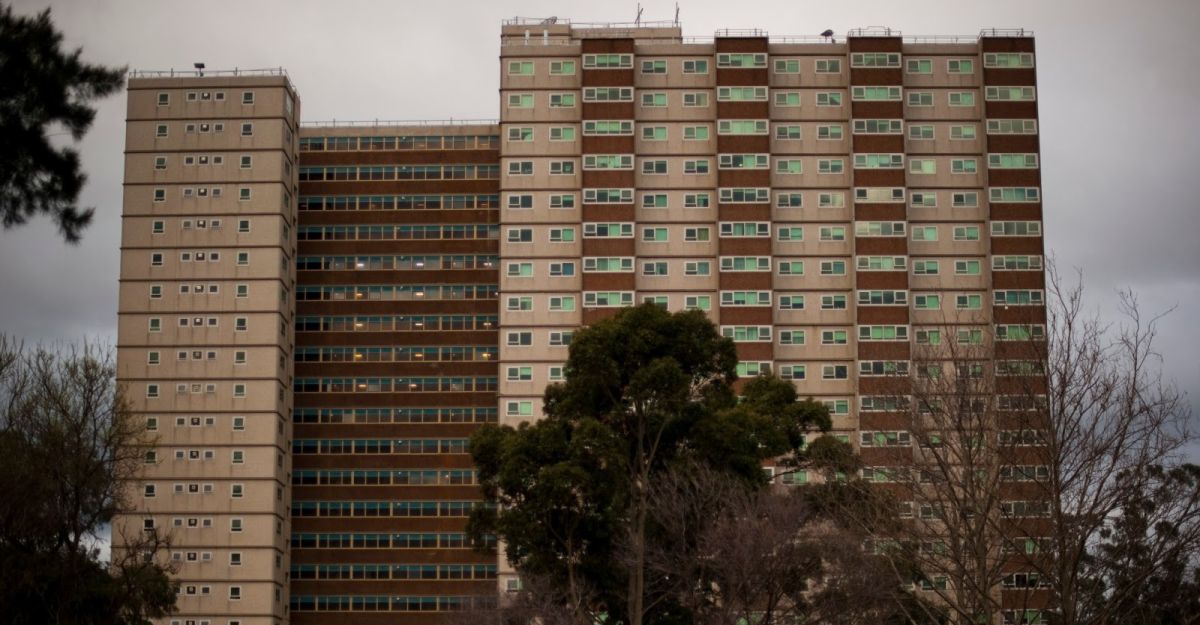Number 54 Holland Park Avenue is a fifteen-minute walk away from Grenfell Tower. Spread over a palatial five floors, the property is on the market for £30,000,000 – six times more than the £5 million aid package Theresa May has pledged to the survivors of Grenfell Tower. Currently owned (but not occupied) by Hilda Joan Jung, it is surely the first entry on any list of homes to be requisitioned for Grenfell Tower survivors.
To speak of not politicising this tragedy – in a borough where one single house is on sale at more than three times the total cost of refurbishing a 24-storey tower block comprised of 120 flats – is an intolerable affront. Housing, in London and elsewhere, is inherently political. That working-class people have burned to death in their own homes in one of the wealthiest cities in the world is political. The Tenant Management Organisation threatening legal action against residents who raised safety concerns and were ignored, time and again, is political. The failure of the Royal Borough of Kensington and Chelsea to respond to this tragedy with anything approaching compassion, concern or even the most basic level competence is political. Threatening to tear survivors away from their already grieving and fractured community, forcing them to move out of borough and beyond is political. And all of this demands a political response.
What happened at Grenfell Tower is as political as it was utterly preventable. According to April 2017 statistics produced by the Department for Communities and Local Government, the Jung house is one of a staggering 1,399 vacant properties in Kensington and Chelsea. In 2015, the borough published a report examining the problem of ‘buy to leave’ (where purchasers ‘invest’ in property with no intention of living in it), and as yet has done nothing about this problem, in spite of acknowledging that demand for social housing increases year on year. And it is precisely because this tragedy is political that our responsibility is not to divert attention away from the many and various culpable parties, but to demand answers and accountability over why this tragedy occurred, and to understand that Grenfell Tower and the people who lost their lives in their own homes must now stand as a symbol of profound class and racial inequality in this city and beyond.
Grenfell Tower shows that to understand class and power, we have to understand housing, because the question of how and where people live is right at the heart of modern capitalism. Not, as racists would argue, because there is pressure on the housing stock due to people like Grenfell Tower victim and Syrian refugee Mohammed Alhajali, who came to the UK needing and deserving to be housed – but because of the tension between a finite supply of land on which homes can be built, and the fact that the priority is always to use that land to create expensive homes for the super-rich instead of ordinary Londoners of any and all nationalities. As the geographer Danny Dorling has shown, ‘the majority of children who live above the fourth floor of tower blocks, in England, are black or Asian’. Where people live, and how much control they have over their housing when officialdom regularly makes working-class people feel they should be grateful to be housed at all, in however precarious and unsafe a home, is not just a question of class, but of race and ethnicity too. And, as with everything about Grenfell Tower, it is deeply and unavoidably political.
Over the past 28 years, Kensington and Chelsea have built just ten new social homes, and stockpiled £274m of useable reserves following years of underspending on housing. When money is spent on council properties, as was the case with Grenfell Tower, the priority is not sprinkler systems or other important safety measures to ensure the health and safety of residents, but external cladding – to improve the view of the tower for residents in multi-million pound homes that look out on to it. Even then, costs are cut – the proposed contractor for the Grenfell refurbishment, Leadbitter, were dropped in favour of Rydon, a contactor that completed the work for £2.5m less. Instead of fire-resistant cladding at £24 per square meter, the flammable Reynobold panels used on Grenfell’s exterior meant a saving of £2 per square meter. That is, a total saving of £5,000. At the time of writing, 79 people are confirmed to have died in Grenfell Tower. There are 30,000 buildings in the UK clad in the same material, many of which are residential. It is too crude, too frightening and too sad to do the relevant maths.
That this paltry sum might, if spent, have saved some lives points to a fundamental truth about how decisions to spend money are made. The cheaper panels, the lack of sprinklers, the inaction over ‘buy to leave’ homes – none of these were about saving money. These decisions, these political choices, were about making money. Very rich people in the borough council, national government and in business made these deliberate and political decisions to worsen the living conditions of residents in Grenfell Tower in order to enrich themselves and their associates. And when what remains of Grenfell is demolished (as was planned in 2014), and new, multi-million pound apartments are erected in its place, and survivors of this tragedy have been forcibly relocated across London and beyond, and when a tiny little commemorative plaque is erected on a lamppost somewhere, these people will still tell us that this inequality is not political.
These people – who vote down legislation that would mean all UK homes must be fit for habitation, who are themselves landlords, who celebrate the decimation of health and safety legislation in the relentless pursuit of profit, who sit on and suppress reports into fire safety in tower blocks – will still insist that what happened at Grenfell Tower was a ‘terrible accident’ and not the result of a series of political choices and policies.
This depoliticisation can and will be resisted. Already, residents and their supporters have occupied Kensington and Chelsea town hall, demanding answers and justice – an action that has led to neighbouring local authorities taking over the organisation from the Royal Borough of Kensington and Chelsea. Mosques, churches, community groups and trade unions have led relief efforts, raising many hundreds of thousands of pounds for survivors in tacit acknowledgement that the state will not provide this support. The Grenfell Action Group and the Radical Housing Network have proposed a list of demands for social-housing tenants, renters and supporters to organise around. Solidarity actions have taken place around the country, with more planned in the days and weeks to come. This movement for justice is resident-led, angry and growing. The entirely preventable tragedy of Grenfell Tower has kick-started a campaign for justice and a political mood of the kind many activists in this country haven’t seen before. This movement is just beginning, and as the death toll climbs and the responsibility is evaded, it will get angrier and more determined to win.
This tragedy is political, and it will remain so. The only way to get any kind of justice for those who died at the hands of the state or to alter the relentless drive for profit at the expense of working-class lives is to show solidarity with Grenfell Tower.






